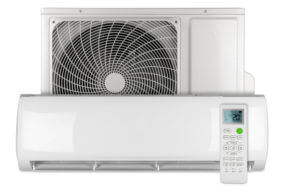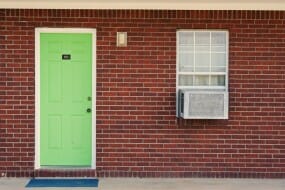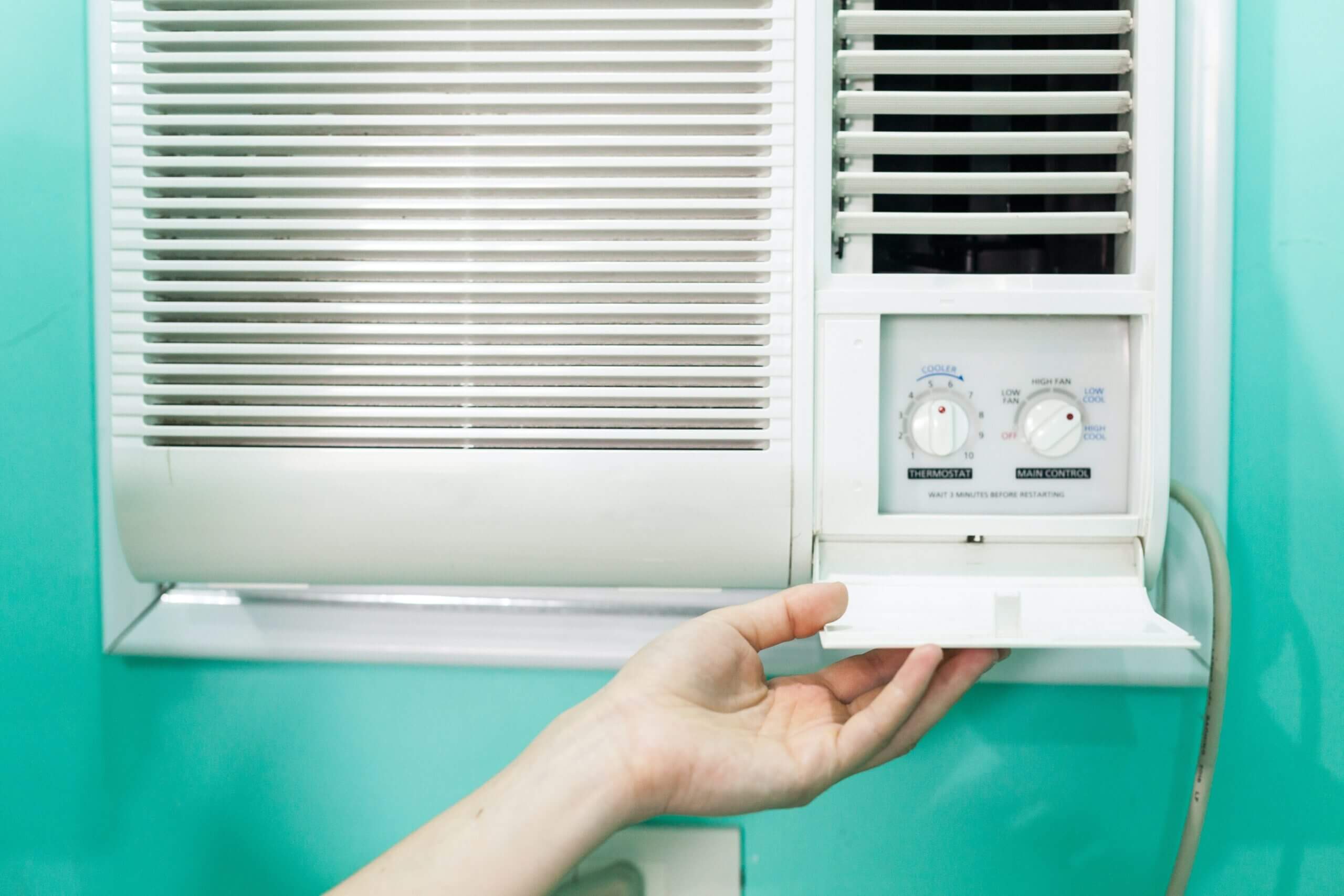Are you doing an HVAC project?
Modernize can pair you with three to four pros in your area, so you can compare options and save time and money.
With an attic air conditioner, you can transform your attic into a comfortable and enjoyable workspace or living area. To learn more about different types of attic air conditioning units, the benefits of installing one, and the potential installation costs, keep reading. If you’re looking for information on whether to install your home’s AC unit in your attic, please explore our Air Conditioner Attic Installation Page.
Attic Air Conditioner Installation and Replacement
A fully furnished attic conversion is a great way to add extra space to your home without the hassle and expense of expanding its physical footprint.
No place in your home will likely get hotter than the attic, however. Attics typically aren’t as well insulated as the rest of the home because they usually are designed as structural support for the roof rather than as living spaces. In many attics, an air conditioning unit that functions separately from your home’s central air conditioning unit is probably the only way you’ll truly be able to moderate and monitor the temperature of your attic.
Below we’ve highlighted the best types of attic air conditioners so you have a clearer understanding of what unit might work best for your space.
Best Attic Air Conditioner Units
Installing ductwork for your attic that ties into your central AC is likely going to prove cost prohibitive or simply impossible due to space constraints. Here are four of the best attic air conditioners that should be able to meet your cooling needs.
Mini Split-System

According to the U.S. Department of Energy, mini split-system air conditioners are a great fit for room additions, add-ons and attic conversions that lack central ductwork. As the name implies, these systems have two parts: a compressor and condenser that sits outside the attic, and an air-handling unit that’s inside the space. The unit also includes a conduit that houses power, tubing for refrigerant, and drainage for condensation.
One reason why ductless mini-split AC units work so well in attic spaces is because they typically require just a small three-inch hole to be drilled through the wall to the outside for the conduit. The indoor air handling part of the split-system that allows cool air into your attic mounts to a wall, while the noisy compressor and fan can be situated a suitable distance away outside the attic and is connected via the conduit. The sleek indoor unit usually comes with a fashionable face frame that provides a modern look that dovetails with any indoor decor, and many units come with remote controls to simplify operation and temperature control.
These are the most expensive attic air conditioners. Costs typically range between $1,500 and $3,000 just for the unit. Installation for mini split-system air conditioners can be another $500 or more depending on difficulty of installation.
Portable Air Conditioning Unit
 These freestanding air conditioning units can be a simple — and cost effective — option to cool down any overly hot space, but they aren’t without their drawbacks.
These freestanding air conditioning units can be a simple — and cost effective — option to cool down any overly hot space, but they aren’t without their drawbacks.
For starters, portable air conditioners are all-in-one units, so the compressor is located inside the attic. Noise levels on certain units can exceed 60 decibels, which may be a bit distracting if you seek quiet along with your cool. Better-quality units come with two hoses: one draws air in from the outside and forces it across the unit’s condenser coils; the other vents heated air inside the room to the outside of your attic. You’ll have to position a portable AC unit near a window so the intake and exhaust hoses can access outside air.
One other item of note is dealing with condensation. Some portable air conditioning units are self-evaporating, so they require little maintenance. Other units may require regular removal of water built up from condensation. A final item: These units draw a lot of power when operating. You may have to install a dedicated circuit to avoid tripping the circuit breaker that serves power to the rest of your attic.
This type of unit can cost anywhere from $300 to $700. You may have to pay a bit more for additional flexible tubing to route the exhaust and intake to a nearby window.
Find the Right Contractor for Your HVAC Project
Whether you’re ready to begin your project now or need some expert advice, our network of contractors are here to help. With a few simple questions, we’ll find the best local professionals for you
Window-Mounted Air Conditioning Unit
 Like portable AC units, window-mounted air conditioners offer an easy solution for your cooling needs, especially if you have a small to modest-sized space.
Like portable AC units, window-mounted air conditioners offer an easy solution for your cooling needs, especially if you have a small to modest-sized space.
Window-mounted AC units can be used with double- or single-hung windows, side-opening sliders, and casement winders. It’s important to know the size and style of your window in order to buy the right type of window-mounted air conditioning unit. It’s equally important to ensure the unit is properly mounted and secured. You can remove the unit in the winter or leave it in place if it’s well-insulated and the window opening is properly sealed from the elements.
These all-in-one air conditioners have an exhaust that faces outside, and a cold air return that faces inside to blow cool air into your attic. You’ll hear more noise than with a mini split-system, but less so than with a portable AC unit.
A new unit will cost between $150 and $800. A professional will likely charge between $100 to $300 to install the unit.
In-Wall Air Conditioning Unit
 Your fourth option to cool your attic is with a wall-mounted device. These air conditioners are often used in attics that lack windows or have sloped windows, as well as attics that have other space considerations.
Your fourth option to cool your attic is with a wall-mounted device. These air conditioners are often used in attics that lack windows or have sloped windows, as well as attics that have other space considerations.
You’ll have to have a hole cut through one of the attic walls to mount the unit. Some in-wall AC units come with a slide-out chassis that is installed from the inside, while others will have a wall sleeve that needs to be secured to the attic framing. The AC unit then slips into the sleeve. These units function like window-mounted AC’s where exhaust is vented outside and cool air is forced inside.
These units cost between $400 and $1,000. There will be additional labor costs to cut through the attic wall and install the mounting sleeve or chassis.
Now that you have an idea of what type of attic air conditioner might work best for your home, you might want some insight into the best air conditioner brands. We’ve got you covered there as well.
Should You Install Air Conditioners in the Attic?
Deciding on whether or not to pull the trigger on a new attic air conditioner depends on how hot your space gets and your personal budget.
If you spend a lot of time working in your attic office or loft, you’ll probably not regret purchasing a dedicated attic air conditioner. Just be sure to get the right type of unit, as some can be pretty noisy and may interfere with routine office calls or video meetings. A potential drawback to attic air conditioners is that they aren’t as energy efficient as central air conditioning units and may lead to a hefty spike in your power bill.
Maintaining Attic AC Units
- Change your HVAC filters regularly. We know, it’s annoying to climb up in the attic and put them in. But a clogged filter could cause your AC evaporator coil to freeze up. It might also make your furnace or heat pump work overtime. All of that makes your system less efficient and more costly.
- Have an HVAC contractor check your unit’s insulation and sealing. A well-sealed, properly-insulated unit is a better performing one, so that will help shore up leaks. Have a contractor out to look at your system at least once a year to catch small problems before they become big ones.
- Build out more insulation. If you are really concerned, you can build a small, insulated room around your unit to prevent heating and cooling loss. You may even consider converting your attic to a finished, conditioned space.
Follow our list of HVAC maintenance tips to ensure your new attic air conditioner always functions at peak performance.
Find the Right Contractor for Your HVAC Project
Whether you’re ready to begin your project now or need some expert advice, our network of contractors are here to help. With a few simple questions, we’ll find the best local professionals for you
Reviews from Real Homeowners
Welcome to Homeowner Resources! We are the Modernize blog. Modernize pairs more than 3 million homeowners a year with pre-vetted contractors in their area. This blog started because we believe homeowners should know everything about their homes, from how their HVAC works to which front door colors they might love. On Homeowner Resources, you can find information on every part of your home, right down to how you can negotiate with contractors to get the best price. Here's more about the blog.
Need a contractor? Learn more about how Modernize finds the right pro for you.




